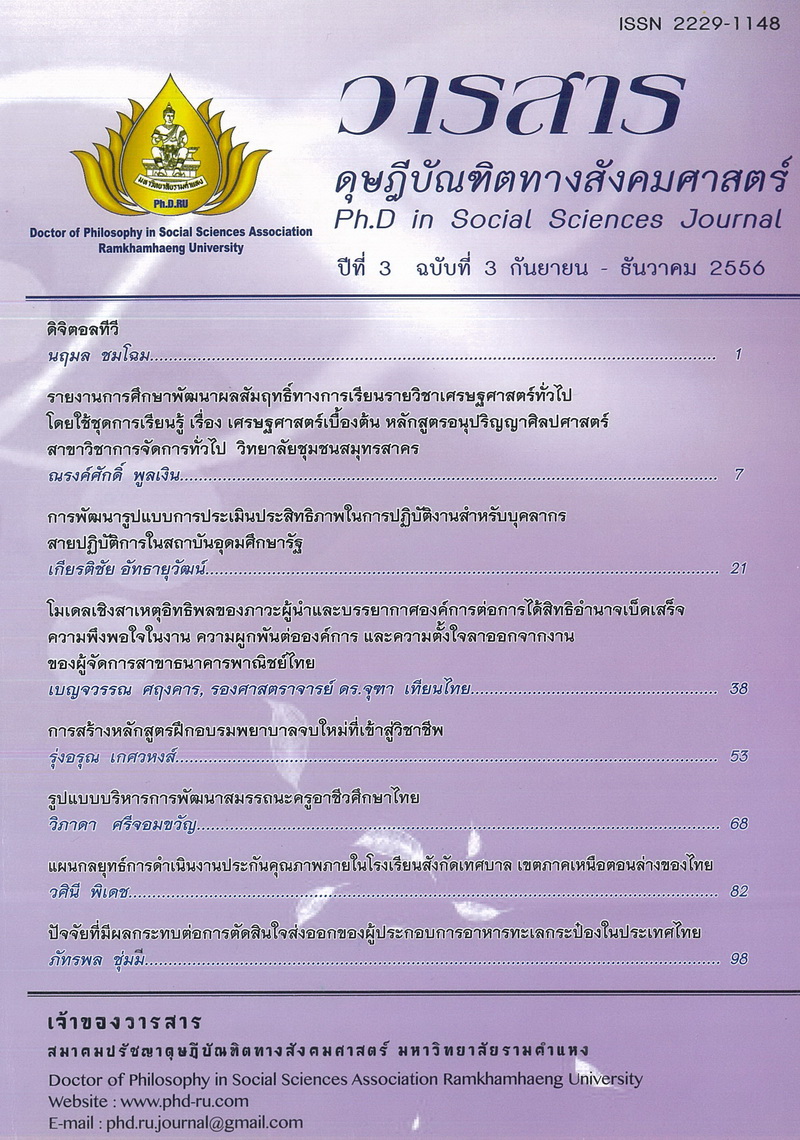รูปแบบบริหารการพัฒนาสมรรถนะครูอาชีวศึกษาไทย
Main Article Content
Abstract
An A dministrative Model for Thai Vocational Competency Based Staff Development
In this dissertation, the researcher investigates in respect to the administration model under consideration, recommendations from 90 percent of the directors of educational institutions and vocational teachers were as follows: 1.)Explanation, Introduction; Principles; Objectives: Importance of Administration; Scope of the Model; and Guidelines for Administration. 2.) In this part, guidelines for the administration of the competency development for vocational teachers in different types of educational institutions under the jurisdiction of the Office of Vocational Education Commission were presented. The guidelines were organized systematically and with steps governing the administration of the competency development of vocational teachers in accordance with the statement of Vocational Educational Standards 2012 by reference to Quality Assurance Standard 3 and indicator no. 10. Quality Assurance Standard 3 states the level of quality required in developing the competency of teachers and educational personnel; the making of plans for the development administration; checks and follow-ups on administration; evaluations of administration; the making of annual reports; and the continuous development of educational quality. The external environment includes society, the economy and politics. The internal environment includes policy, law, among other factors. 3.) The evaluation of the practical feasibility of the model made use of a result-based management (RBM) approach developed by the researcher with the following results: Experts and those concerned were of the opinion that the model was practically feasible in an overall picture at a high level with a mean of 4.33. The standard deviation was 0.455. The evaluation of those concerned was at a high level with the mean at 4.21 and the standard deviation at 0.398, which was in the same direction of opinion.
Article Details
Academic articles, research articles, and book reviews in the Ph.D. in Social Sciences Journal are author’s opinions, and not the publisher’s, and is not the responsibility of the Ph.D. in Social Sciences Journal Philosophy Association, Ramkhamhaeng University. (In the case that research is done on human, the researcher has to be trained in Ethics for Doing Research on Human Training and has to produce the evidence of the training).


